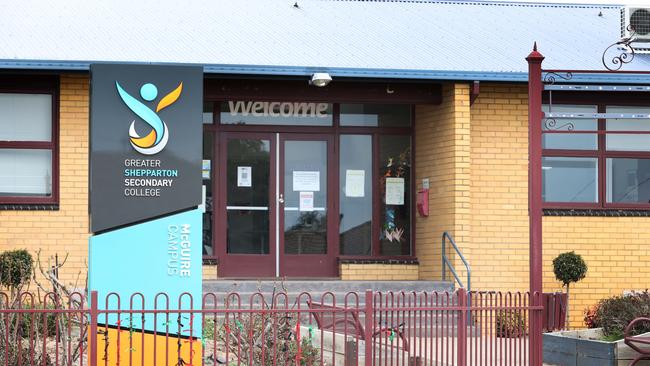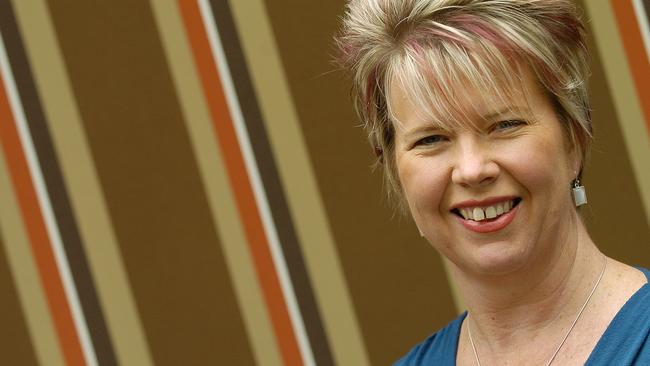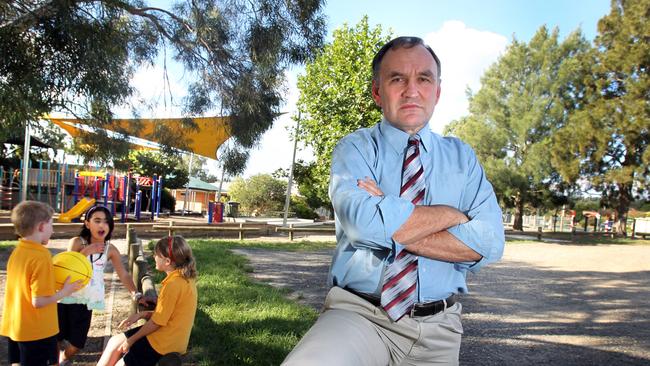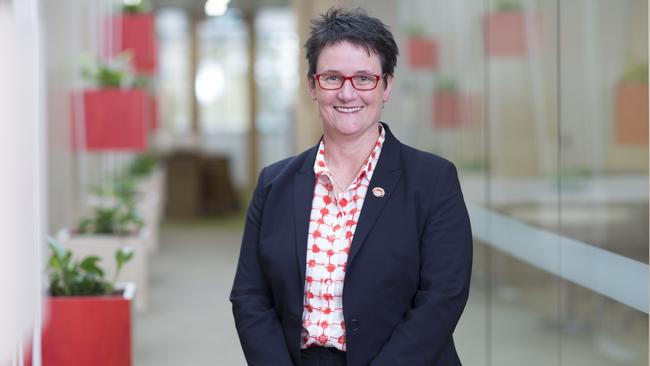Parents call for transparency as teaching crisis deepens
More than 2500 teaching jobs are currently being advertised to fill shortages in schools across the state as the teaching crisis deepens. See which areas are worst affected.

Albury Wodonga
Don't miss out on the headlines from Albury Wodonga. Followed categories will be added to My News.
Victorian parents want to be told when their school is battling staff shortages and what it means for students.
The state’s largest parents’ association says being more transparent with families would ease anger and anxiety about the current teaching crisis.
Parents Victoria chief executive Gail McHardy said the education department, schools and teachers should be “upfront” about staff shortages and the resulting challenges.
While the education department, schools and teachers had “direct internal knowledge and understanding of the challenges and impacts on their school at any given time” parents were often left in the dark.
“Being upfront on how the school is impacted … due to a lack of employees, will prevent blame, anxiety and anger at schools and invite more empathy and understanding of the problems schools are currently facing that is beyond their control,” Ms McHardy said.

She said parents and students were seeing classes split and a high number of casual relief teachers being used as schools struggled to fill vacancies.
One school even had to forgo student reports at the end of Term 2 this year due to a lack of teachers.
The Herald Sun recently revealed 10 educators at Greater Shepparton Secondary College were unable to complete school reports.
The most recent state government data showed Melbourne’s west, including Hobsons Bay, Moonee Valley, Maribyrnong and Wyndham had the most teaching vacancies.
There were 2421 vacancies across the area’s 172 primary, secondary and special schools.
Melbourne’s southern schools region was also struggling with a lack of educators.
The area, which covers Cardinia, Casey and Greater Dandenong had 1848 vacancies over 165 schools.
Regional schools were also struggling to recruit educators.
Goulburn was one of the hardest hit regions as schools in Greater Shepparton, Mitchell, Moira, Murrindindi, Strathbogie council areas recorded 619 vacancies across 109 schools.
Principals ‘walk tightrope’ over staff shortages
Berwick Lodge Primary principal Henry Grossek said principals were “walking the tightrope” between maintaining a positive environment for students and parents and being honest about staffing challenges.
At the end of 2022 he had to tell some students that the school was yet to find a class teacher for them in 2023.
“Normally the children find out which class they will be in, and we have a ‘meet the teacher day’. We couldn’t do that,” he said.
Berwick Lodge managed to fill the vacancies before the start of the 2023 school year, but by the end of Term 1 Mr Grossek faced the “monumental task” of finding another four teachers after three took family leave and another fell ill.

“It was incredibly stressful. No one was applying for the positions and we had to readvertise,” he said.
Ultimately, Mr Grossek persuaded part time and relief teachers to take on more hours and fill the positions.
The veteran principal said competition for teachers was so fierce some schools were resorting to offering incentives to secure staff.
The practice meant some schools were losing staff they had signed on before they even started.
“Schools that don’t have the capacity to offer extra money are missing out,” Mr Grossek said.
The Australian Education Union has been writing daily letters to Labor MPs alerting them to soaring vacancy rates.
Victoria branch president Meredith Peace said at the start of the year there were an “unprecedented” 700 vacancies for educators.
On Friday there were 2500 vacancies and in the past week alone 1437 job ads were added to the state government’s online recruitment site.
Some schools had given up trying to fill roles and had resorted to cutting programs or relying on casuals, Ms Peace said.

In some primary schools class numbers had risen to 33 while others were splitting classes across year levels to cover teacher absences.
Ms Peace said existing teachers were under significant pressure and students at some schools were not receiving the quality education they deserved.
She called for immediate action by the state government to support current educators
and encourage people to enter the industry.
Measures should include offering free teaching degrees, paying students on school placements and providing financial incentives to existing educators.
“I’ve heard stories of young people interested in teaching choosing nursing instead because the degree is free,” Ms Peace said.
“Those people that do study teaching are having to defer their degree because they can’t afford to take time off from their part time jobs to complete their three week school placement.
“We know that 50 per cent of people studying teaching don’t finish their degree.”
Ms Peace said schools would soon be told how much funding they should expect to receive for 2024 and the union hoped the state government would keep its post budget promise to provide more for schools.
“Every student deserves a qualified teacher at the front of the classroom,” she said.
“And educators need more support to alleviate the significant pressure they are under to ensure all children receive a quality education.”
Red tape stopping international teachers
Anzuk Education chief executive Daniel Mundy said the recruitment company was still seeing increased demand for teaching staff across the state, especially in regional areas.
Mr Mundy said existing teachers opting to work overseas or leave the profession altogether was contributing to difficulties filling vacancies quickly.
“Gaining overseas experience is a rite of passage for teachers and once the borders reopened after Covid a lot of people left roles in Australia,” he said
The company, which places teachers all around the world, was experiencing high demand from international teachers wanting to work in Australia and had up to 1000 international teachers on the books.
“There’s a lot of interest from South Africa especially,” Mr Mundy said.
However, immigration and visa hurdles made securing long term teaching positions in Australia slow and difficult.
Innovative solutions were needed to attract more people to the industry.
“We’d love the government to look at a partnership with the private sector, similar to what we’re doing in the US at the moment,” Mr Mundy said.
“Last year we provided one per cent of California’s teachers … that’s 300 positions filled with people we recruited and trained.”
The model sources potential teachers, pays them while they train and them matches them with local schools.
Mr Mundy said the scheme, which has been running for two years, had a 95 per cent retention rate.
“The teachers are able to gain their qualifications with no debt and go on to work in the communities they live in,” he said.
An Education Department spokesman said the number of teachers in Victoria had grown at “twice the national average”.
“We’re delivering a range of initiatives that have grown our workforce by 5000 extra teachers between 2020 and 2022,” he said.
“We have met with the Australian Education Union to discuss our teacher recruitment drive. We have introduced targeted measures to attract and retain teachers — so they have the support they need to deliver the education our kids deserve.
“Victoria is home to some of the most talented teachers and school leaders in the nation and we’re backing them with the resources they need to do what they do best – support our kids to get a world class education.”
More Coverage
Originally published as Parents call for transparency as teaching crisis deepens




